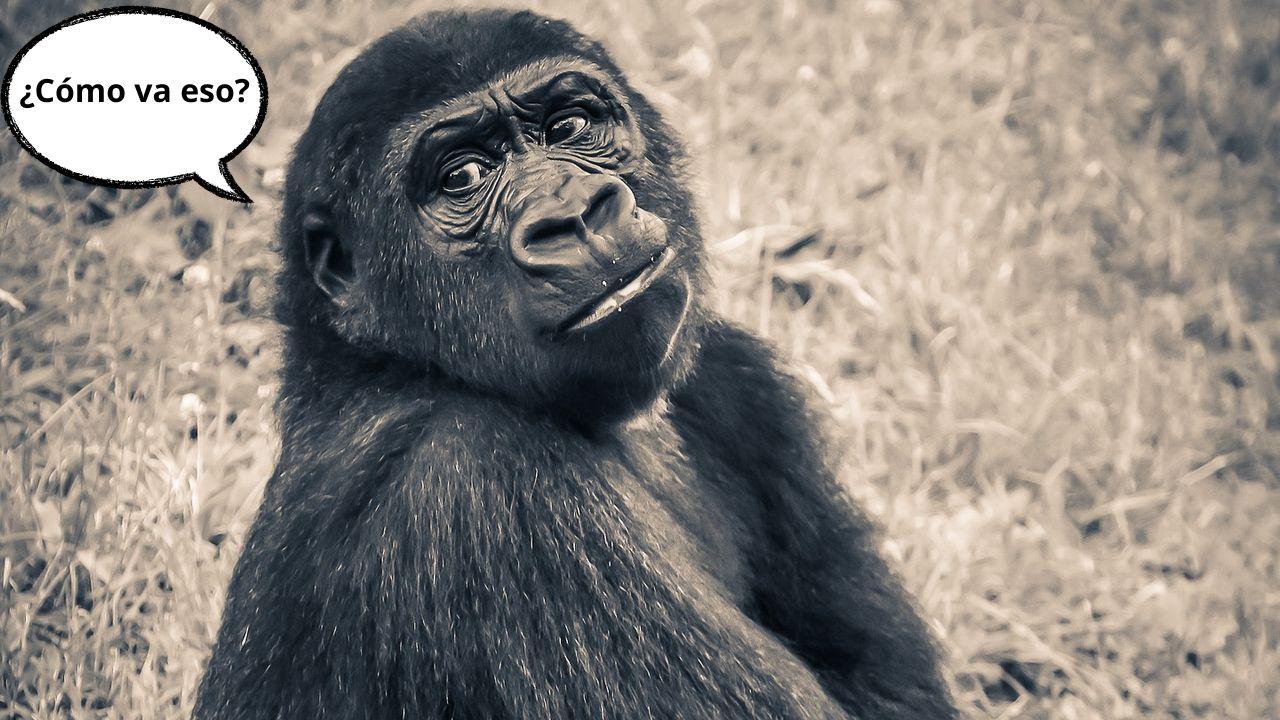
Artificial Intelligence to Help Communicate with Animals
Artificial intelligence to help communicate with animals: Imagine a world where we truly understand our furry, feathered, and scaled friends. It’s no longer science fiction; researchers are actively developing AI to decipher animal communication, moving beyond simple observation to potentially unlock the secrets of the animal kingdom. This journey into the intersection of AI and animal behavior promises to revolutionize our understanding of the natural world and our relationships with animals.
From analyzing complex vocalizations to interpreting subtle body language, AI offers unprecedented opportunities. Machine learning algorithms are being trained to identify patterns and nuances in animal communication that might escape human detection. This could lead to breakthroughs in animal welfare, conservation efforts, and even veterinary care, allowing us to better understand and respond to animal needs.
AI Applications in Animal Vocalization Analysis

The burgeoning field of AI is revolutionizing our understanding of the animal kingdom, particularly through its application in analyzing complex animal vocalizations. Machine learning algorithms offer unprecedented power to sift through vast amounts of acoustic data, revealing patterns and nuances previously hidden from human observation. This opens doors to deeper insights into animal communication, social structures, and even conservation efforts.Machine learning algorithms are effectively used to analyze animal vocalizations by leveraging their ability to identify patterns in large datasets.
Algorithms like deep learning neural networks, particularly convolutional neural networks (CNNs) and recurrent neural networks (RNNs), are particularly well-suited for this task. CNNs excel at processing the spectrographic representations of sounds, identifying unique features within the frequency and time domains. RNNs, on the other hand, are adept at capturing temporal dependencies in vocalizations, crucial for understanding the context and sequence of sounds.
These algorithms are trained on large annotated datasets of animal sounds, learning to classify, identify, and even predict vocalizations based on various acoustic characteristics.
AI-Powered Tools for Animal Sound Analysis
Several AI-powered tools are currently utilized for analyzing animal sounds. These tools often integrate different machine learning models and signal processing techniques to achieve robust and accurate analysis. For example, some software packages employ sophisticated algorithms to automatically detect and classify different bird species based on their songs. Others focus on analyzing whale calls, identifying individual whales through their unique vocal signatures.
Imagine AI translating whale songs or deciphering a dog’s whine – it’s a fascinating prospect! Building the apps to manage and analyze this data could be streamlined using the innovative approaches described in this article on domino app dev, the low code and pro code future , making development faster and more efficient. This kind of rapid development is crucial for tackling the complex challenges involved in interspecies communication through AI.
These tools can process vast amounts of acoustic data collected from various sources, such as underwater hydrophones or terrestrial microphones, significantly accelerating research and monitoring efforts. The development of these tools has been greatly facilitated by increased computational power and the availability of large, publicly accessible datasets of animal sounds.
Challenges in Accurately Interpreting Animal Vocalizations
Despite the advancements, several challenges remain in developing AI systems capable of accurately interpreting animal vocalizations. One significant hurdle is the vast diversity of animal vocalizations. Each species, and even individuals within a species, can exhibit unique vocal patterns influenced by factors such as age, sex, environmental conditions, and social context. Creating a universal AI system capable of handling this diversity requires immense amounts of training data and sophisticated algorithms capable of generalizing across different species and contexts.
Another challenge lies in the subjective nature of interpreting meaning. While AI can effectively classify and identify sounds, accurately determining the communicative intent behind these sounds remains a complex problem requiring a multidisciplinary approach that integrates both acoustic analysis and behavioral observation. Furthermore, the noisy environments in which many animal vocalizations are recorded can introduce significant artifacts, complicating the analysis and potentially leading to misinterpretations.
AI’s Potential to Identify Subtle Cues in Animal Vocalizations
The potential of AI to uncover subtle cues in animal vocalizations that humans may miss is considerable. Human auditory perception is limited, and we may overlook subtle variations in frequency, amplitude, or timing that carry crucial information. AI algorithms, however, can detect and analyze these subtle variations with far greater precision, potentially revealing hidden layers of communication complexity.
For example, AI might detect slight changes in vocalization frequency that indicate an animal’s emotional state or social status, or identify subtle patterns in vocalizations that signal impending danger or environmental changes. This ability to detect subtle cues could revolutionize our understanding of animal behavior and communication, leading to more effective conservation strategies and a deeper appreciation for the complexity of the animal world.
AI for Interpreting Non-Vocal Communication

Animals communicate in incredibly diverse ways, far beyond the vocalizations we often focus on. Understanding their non-vocal communication is key to comprehending their social structures, emotional states, and overall well-being. Artificial intelligence offers powerful tools to decipher these complex signals, opening up new avenues for interspecies understanding and conservation efforts.AI’s potential in this field is immense, moving beyond simple observation to sophisticated analysis and interpretation of subtle cues.
By leveraging machine learning algorithms, we can process vast amounts of data – from high-resolution video footage to detailed chemical analyses – to uncover patterns and meanings previously invisible to the human eye. This technology promises to revolutionize our interactions with the animal kingdom, providing insights into animal behavior and cognition that were previously unattainable.
Forms of Non-Vocal Animal Communication and AI Analysis
Animals utilize a variety of non-vocal communication methods. Body language, including posture, facial expressions, and gestures, plays a crucial role. Pheromones, chemical signals released into the environment, convey information about reproductive status, territorial boundaries, and individual identity. Tactile communication, through touch and grooming, strengthens social bonds and transmits information within a group. AI can analyze these different forms through various techniques.
For instance, computer vision algorithms can be trained to recognize specific postures or facial expressions associated with particular emotional states or behavioral intentions. Similarly, sophisticated sensors and machine learning models can detect and identify pheromones, providing insights into chemical communication. Analysis of tactile interactions can be performed through motion tracking and sensor data from animals fitted with appropriate technology.
AI System for Analyzing Visual Cues and Inferring Emotional States
An AI system designed to analyze visual cues from animal behavior and infer emotional states would require a multi-faceted approach. First, a large dataset of video recordings would be necessary, meticulously annotated by experts to label the animals’ behaviors and corresponding emotional states. This dataset would then be used to train a deep learning model, such as a convolutional neural network (CNN), capable of recognizing subtle changes in posture, facial expressions, and other visual cues.
The CNN would learn to associate specific visual patterns with different emotional states (e.g., fear, aggression, contentment). The system could also incorporate other data sources, such as heart rate or respiration data obtained through wearable sensors, to improve the accuracy of its emotional state estimations. This system would be particularly useful in veterinary care, animal welfare assessments, and zoological research.
For example, a system trained on elephant behavior could potentially detect subtle signs of stress or distress in zoo elephants, allowing for timely intervention.
AI Assistance in Understanding Complex Social Interactions
AI can significantly improve our understanding of complex social interactions within animal groups. By analyzing large datasets of observational data, AI algorithms can identify patterns of interaction, social hierarchies, and communication networks within animal groups. For example, social network analysis techniques can be applied to data from animal tracking studies to map the relationships between individuals and identify key individuals within a group.
Machine learning algorithms can also be used to predict the outcome of social interactions based on the behavior of the individuals involved. This information is crucial for understanding social dynamics, resolving conflicts, and managing animal populations effectively. For instance, AI could assist in managing elephant herds by identifying potential conflicts based on behavioral patterns, thereby allowing for proactive interventions.
Similarly, studying primate social dynamics using AI could provide insights into cooperation, competition, and social learning within these complex societies.
Ethical Considerations and Future Directions
The development of AI capable of communicating with animals presents a fascinating frontier, but it also raises profound ethical questions that demand careful consideration. We must move forward responsibly, acknowledging the potential for both immense benefits and unforeseen consequences. The very act of attempting interspecies communication through AI challenges our understanding of animal sentience and our place within the natural world.The potential for misinterpretation and anthropomorphism is a significant ethical concern.
Anthropomorphism, the attribution of human characteristics to animals, can lead to inaccurate interpretations of animal behavior and communication. AI systems, trained on human-centric data, might inadvertently impose human biases onto animal signals, leading to misunderstandings and potentially harmful actions. For example, an AI interpreting a dog’s bark as “angry” when it’s actually a playful greeting could lead to inappropriate responses from humans, creating unnecessary stress for the animal.
We need to develop robust AI models that avoid this pitfall, focusing on objective analysis of animal communication without projecting human emotions or intentions.
Potential Misinterpretations and Anthropomorphism in AI-Based Animal Communication
AI-driven animal communication tools are prone to misinterpretations due to the inherent complexity of animal behavior and the limitations of current AI technology. A simple vocalization, for instance, might have multiple meanings depending on the context, the animal’s emotional state, and subtle body language cues. An AI, lacking the nuanced understanding of these factors, could easily misinterpret the meaning of a communication signal.
Furthermore, the reliance on existing datasets, which might be biased or incomplete, can further exacerbate the problem. Imagine an AI trained primarily on videos of domesticated cats interpreting the behavior of a wild tiger—the results would likely be inaccurate and potentially dangerous. Therefore, rigorous testing and validation are crucial to minimize the risk of misinterpretation and anthropomorphism.
Future Applications of AI in Animal Welfare and Conservation
The responsible development of AI for animal communication holds immense potential for advancing animal welfare and conservation efforts. Careful consideration of ethical implications is paramount.
- Improved Veterinary Care: AI could analyze animal vocalizations and behavioral patterns to detect early signs of illness or distress, leading to earlier and more effective treatment.
- Enhanced Animal Training: AI could provide real-time feedback to trainers, optimizing training methods and improving the animal’s learning experience. This could be particularly beneficial for working animals like service dogs or guide horses.
- Wildlife Conservation: AI could monitor animal populations, track their movements, and analyze their communication patterns to understand their behavior and needs, aiding in conservation efforts.
- Enhancing Animal Sanctuaries: AI could assist in assessing the welfare of animals in sanctuaries, identifying individuals requiring additional care or enrichment.
- Combating Illegal Wildlife Trade: AI could analyze audio and visual data to identify and track illegal activities related to the wildlife trade, contributing to enforcement efforts.
Facilitating Effective Human-Animal Communication in Various Contexts
AI can bridge the communication gap between humans and animals in various settings, improving interactions and outcomes. In veterinary care, AI could analyze an animal’s vocalizations and body language to help veterinarians understand the animal’s pain level or discomfort more accurately. This would lead to more effective diagnosis and treatment. Similarly, in animal training, AI could provide real-time feedback on the effectiveness of training techniques, enabling trainers to adjust their methods and optimize the learning process for the animal.
For instance, an AI system could analyze a dog’s response to a command and identify subtle signs of confusion or frustration, allowing the trainer to modify the approach and improve the animal’s understanding. In zoos and sanctuaries, AI could be used to monitor animal behavior and detect signs of stress or illness, allowing staff to intervene and improve the animals’ well-being.
The key is to develop AI systems that are not only accurate but also sensitive to the animal’s individual needs and preferences.
Illustrative Examples of AI in Animal Communication: Artificial Intelligence To Help Communicate With Animals
The development of AI capable of understanding animal communication is rapidly advancing, opening exciting possibilities for veterinary care, conservation efforts, and our overall understanding of the animal kingdom. This technology moves beyond simple observation, allowing us to potentially decipher the nuanced signals animals use to communicate their needs and emotional states. The following examples illustrate the potential and the challenges of this emerging field.
AI Assisting Veterinary Diagnosis, Artificial intelligence to help communicate with animals
Imagine a scenario where a veterinarian is examining a critically ill lion at a wildlife sanctuary. The lion is exhibiting subtle signs of distress: a slightly elevated heart rate, shallow breathing, and unusual vocalizations that are difficult to interpret even for experienced zoologists. A veterinarian uses a portable AI-powered device equipped with sensors that measure the lion’s vital signs, record its vocalizations, and analyze its body language through a high-resolution camera.
The AI system, trained on a vast dataset of lion vocalizations and behavioral patterns associated with various illnesses, processes the data in real-time. It identifies a pattern consistent with a severe infection, pinpointing the likely location and severity. This rapid diagnosis, enabled by AI, allows for immediate and targeted treatment, significantly increasing the lion’s chances of survival. The AI system’s detailed report includes visual representations of the analyzed data, allowing the veterinarian to understand the reasoning behind the diagnosis and to confidently choose the most effective course of action.
AI-Powered Animal Vocalization Translator
A sophisticated AI system, “AnimalSpeak,” translates animal vocalizations into human-understandable language. This system uses deep learning algorithms trained on massive datasets of animal vocalizations, coupled with contextual information gathered from observations of animal behavior. AnimalSpeak analyzes the frequency, amplitude, and timbre of sounds, along with associated visual cues like body posture and facial expressions. For example, it might identify a dog’s bark as expressing excitement based on the pitch and rapid repetitions, or interpret a whale’s song as a complex mating call based on the frequency modulation and duration.
However, limitations exist. AnimalSpeak may struggle with dialects or variations in vocalizations across different populations of the same species. Biases in the training data could also lead to misinterpretations. For instance, if the training data predominantly features vocalizations from domesticated animals, the system might struggle to accurately interpret the calls of their wild counterparts. The system is therefore designed with built-in safeguards to flag instances of uncertainty and to continuously learn and improve its accuracy through ongoing data collection and refinement.
AI-Powered Zoological Behavior Monitoring System
The AI-powered device resembles a large, unobtrusive camera system integrated with sophisticated motion and sound sensors. It’s mounted strategically within the zoo enclosure, offering a panoramic view of the animals’ habitat. The device continuously monitors the animals’ behavior, analyzing their movements, interactions, and vocalizations. A central processing unit uses advanced machine learning algorithms to detect patterns indicative of stress, illness, or unusual social dynamics.
The system’s visual representation would be a user-friendly dashboard displaying real-time data visualizations. This includes heat maps showing animal movement patterns, graphs depicting vocalization frequency and intensity, and interactive timelines highlighting significant behavioral events. Alerts are automatically generated if the AI detects any deviations from established baseline behavior, enabling zookeepers to intervene promptly and ensure the well-being of the animals under their care.
The system also includes a comprehensive database for long-term behavioral analysis, providing valuable insights into animal welfare and conservation strategies.
Closing Summary

The potential for AI to bridge the communication gap between humans and animals is truly exciting. While challenges remain – including ethical considerations and the potential for misinterpretations – the advancements in AI-powered animal communication tools are paving the way for a more compassionate and understanding relationship with the animal kingdom. As AI technology continues to evolve, we can anticipate even more sophisticated systems that will not only help us understand animals better, but also enhance their lives and our own.
Expert Answers
Can AI truly understand animal emotions?
While AI can identify behavioral patterns associated with certain emotions, “understanding” in the human sense remains a complex issue. AI can detect signs of stress, happiness, or fear, but whether it truly grasps the subjective experience of these emotions is still debated.
What are the limitations of using AI for animal communication?
Current AI systems are limited by the data they are trained on. Biases in data sets can lead to inaccurate interpretations. Additionally, the complexity of animal communication, including contextual factors and individual variations, presents a significant challenge.
Could AI lead to anthropomorphism in interpreting animal behavior?
Yes, there’s a risk. Attributing human-like thoughts and feelings to animals based on AI interpretations is a concern. Careful design and interpretation of AI outputs, along with rigorous scientific validation, are crucial to mitigate this risk.
